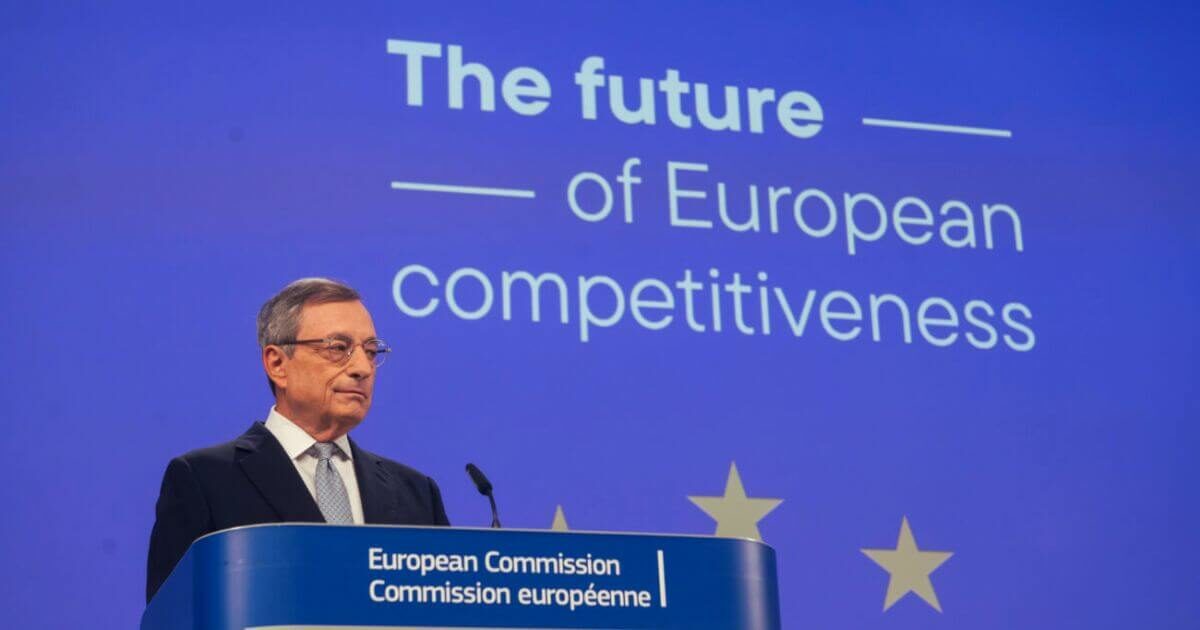Draghi’s Vision: Boosting Europe’s Competitiveness in Tech and Innovation
The Draghi report is a 2024 report addressing European competitiveness and the future of the European Union. Authored by former ECB president and former Prime Minister of Italy Mario Draghi.
The report looks at the challenges faced by the industry and companies in the Single Market. It outlines how Europe will no longer be able to rely on many of the factors that have supported growth in the past and lays out a clear diagnosis and provides concrete recommendations to put Europe onto a different trajectory. A one-line summary of the report is that Draghi argues for Europe to become more like the US.

Key points
- On September 9, 2024, the European Commission released a report by Mario Draghi, focused on improving European competitiveness, emphasizing technological innovation, decarbonization, and reducing dependencies.
- Draghi stresses Europe must close its innovation gap with the US and China, particularly in AI and clean tech, by increasing public and private funding, venture capital, and technology-focused investments.
- Recommendations include deregulation and simplifying EU rules that hinder tech innovation, alongside easing merger restrictions in sectors like telecoms to boost investment.
- Draghi highlights the need for a unified European financing system and capital markets to overcome fragmentation and help startups scale, as many unicorns relocate to the US.
- AI is a major focus; Draghi proposes industry-wide coordination and data sharing to accelerate AI integration in key sectors, with a vision to make the EU a leader in AI development.
- The report faces mixed reactions, with some supporting its industrial strategy, while others criticize potential risks to competition and argue that easing regulations could harm market balance.
Insights
On September 9, 2024, the European Commission published a landmark report by former ECB chief Mario Draghi, outlining a strategy to enhance Europe’s global competitiveness. The report prioritizes technological innovation, decarbonization, and reducing economic dependencies, with a strong emphasis on bridging the productivity gap between the EU and the US. Commission President Ursula von der Leyen will decide which of Draghi’s recommendations to implement as part of Europe’s long-term economic strategy.
A key argument in the report is that Europe must narrow its innovation gap with the US and China, particularly in artificial intelligence and clean technologies like electric vehicles. Draghi urges a substantial increase in both public and private investments, citing Europe’s lagging venture capital market as a major hurdle. Unlike in the US, where high-risk tech startups attract robust VC funding, European startups remain heavily reliant on bank loans, limiting their potential for rapid expansion.
To address these challenges, Draghi calls for deregulation and simplifying EU rules that he sees as obstructing innovation. He argues that Europe’s strict regulatory environment slows technological progress and suggests easing merger restrictions, particularly in the telecom sector, to boost investment. However, these proposals have already sparked debate, as critics warn that reducing regulatory oversight could undermine competition and consumer protections.
Another critical recommendation involves financial market integration. Draghi highlights how Europe’s fragmented financial system discourages investment in high-growth sectors, often pushing promising startups to seek funding and expansion opportunities in the US. He advocates for a unified European financing system and deeper capital markets to better channel household savings into productive investments, making it easier for startups to scale within Europe.
Artificial intelligence emerges as a major focus of the report, with Draghi calling for industry-wide coordination and data sharing to accelerate AI adoption. He envisions AI driving growth across key European industries, from manufacturing to healthcare, and proposes an “AI Vertical Priorities Plan” to ensure AI development aligns with strategic economic sectors. He also suggests loosening competition rules to allow key European tech players to scale faster, a move that has drawn criticism from some market analysts and civil society groups.
The report has received mixed reactions from industry leaders, policymakers, and researchers. Some praise Draghi’s industrial strategy and emphasis on innovation, while others express concerns that his deregulatory push could harm fair competition and reinforce monopolies. As the EU debates its next steps, the extent to which von der Leyen adopts Draghi’s proposals will shape the bloc’s economic trajectory in the coming years.
Closing thoughts
Draghi’s report contained themes of unity and sovereignty. Unity in terms of implementing the Single Market, condensing and merging legislation, the creation of a capital markets union, and guaranteeing supply chain and trade agreements with US tech companies. Sovereignty in terms of increasing and protecting security and reducing dependencies in a “world of less stable geopolitics.”
Download the report: Draghi Competitiveness Report, September 2024

